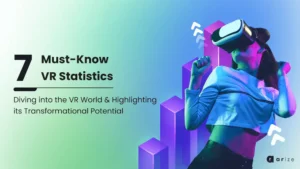While the mixed reality is less popular or well-known than virtual and augmented, the benefits it may provide are as significant.
MR technology is most recognized for its entertainment potential via engagement with the digital and physical worlds. Also, it can be just as valuable as a business tool.
Its capacity to help us advance and improve the workplace still needs to be explored. But there are a few ways companies are using to support its potential. Here are a few examples.
Better Teamwork
While the pandemic has accelerated the use of technologies like MR, VR, and AR, we are now discovering how beneficial they are for collaboration, regardless of the circumstances.
The capacity of new businesses to work on projects using holograms and 3D models, from the convenience of their location, minimizes the problems and logistics of bringing teams together. Moreover, having to work within a limited timeframe due to travel length, restrictions, etc.
Faster Innovation
MR encourages creativity and freedom with less waste and expenditure. Creating simulations and models to conceptualize and share plans and ideas makes it easier to communicate your vision. And work on ideas in real-time, with a fully visualized representation of your creativity, speeding up the innovation process and making it easier to collaborate on and refine new ideas.
Team Cooperation
MR gives each team member a front-row seat and a voice in the design process thanks to its enhancement of team dynamics.
A mixed-reality headset with cameras and a microphone can feed the design process live to team members, specialists, and industry experts. This allows for live guiding and discussion, lowering the chance of mistakes, misunderstandings, or miscommunication between all members.
Improved Training
A key benefit of MR, as with AR and VR, is the distinctive ability to improve practical training in different fields.
Employees can learn new skills faster and gain first-hand understanding and knowledge by being given immersive training experiences through MR.
It allows for practical training in medicine or emergency services that could otherwise not be replicated in a real-world setting.
Conclusion
The main key features of mixed reality technology are that it bridges the gap between VR and AR. While many put it under the umbrella of AR, it would be better to consider it as a separate entity, sitting midway between the other two technologies.
Being able to observe and interact with a 3D item that the entire team can see simultaneously is not only a boost to business productivity. Still, it would forever transform fields such as education, healthcare, construction, and more.
For many businesses, MR has quickly become a reality because of the experience it provides. As a result of the experience it gives, MR has swiftly become a reality for many businesses. AR, VR, and MR have become crucial technologies for businesses. Firms not utilizing them risk falling behind and struggling to compete.



